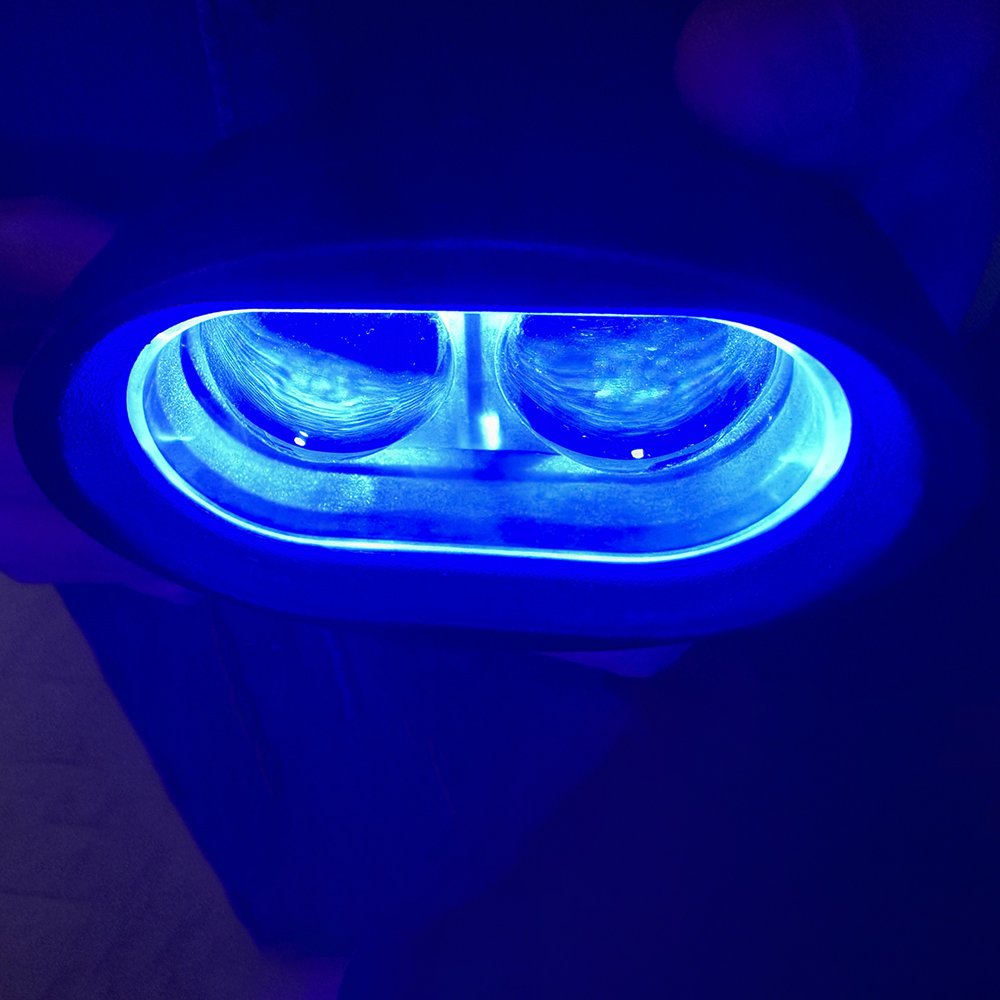Einführung
Warnleuchten sind ein wichtiger Bestandteil von Einsatzfahrzeugen und sorgen für Sichtbarkeit und Sicherheit im Straßenverkehr. Es gibt verschiedene Arten von Warnleuchten, blaue und rote LEDs (Licht emittierende Dioden) werden üblicherweise verwendet. In diesem Artikel befassen wir uns mit der Wissenschaft, die hinter blauen und roten LEDs in Warnleuchten steckt, und erklären, wie sich ihre unterschiedlichen Wellenlängen auf die Sichtbarkeit auswirken und warum sie für diesen wichtigen Zweck ausgewählt wurden.
Licht-Wellenlängen verstehen
Bevor wir uns mit den Besonderheiten von blauen und roten LEDs befassen, ist es wichtig, das Konzept der Lichtwellenlängen zu verstehen. Licht, einschließlich des sichtbaren Spektrums, besteht aus verschiedenen Farben, die jeweils einer bestimmten Wellenlänge entsprechen. Das sichtbare Spektrum reicht von kürzeren Wellenlängen (violett und blau) bis zu längeren Wellenlängen (grün, gelb, orange und rot).

Warum Blau und Rot?
Blaue und rote LEDs werden aufgrund ihrer unterschiedlichen Eigenschaften für Warnleuchten bevorzugt:
Blaue LEDs
Blaues Licht hat eine kürzere Wellenlänge, was bedeutet, dass es in der Atmosphäre weniger gestreut wird. Dank dieser Streuungseigenschaft kann blaues Licht Nebel, Regen und Staub besser durchdringen als Farben mit längeren Wellenlängen. Diese verbesserte Sichtbarkeit ist entscheidend für Einsatzfahrzeuge, die unter schwierigen Wetterbedingungen unterwegs sind.
Rote LEDs
Rotes Licht hat eine längere Wellenlänge am anderen Ende des Spektrums. Rote LEDs sind dafür bekannt, dass sie Rauch und Dunst besser durchdringen können als Farben mit kürzeren Wellenlängen. Daher eignen sich rote LEDs ideal für Warnleuchten in Situationen, in denen die Sicht beeinträchtigt sein kann, z. B. bei Bränden.

Die Rolle der LED-Technologie
Nachdem wir nun verstanden haben, warum blaue und rote Wellenlängen gewählt werden, wollen wir nun untersuchen, warum LEDs die Technologie der Wahl für Warnleuchten sind.
Energie-Effizienz
LEDs sind äußerst energieeffizientSie verbrauchen deutlich weniger Strom als herkömmliche Glühbirnen oder Halogenlampen. In Notfällen, in denen Fahrzeuge über längere Zeiträume beleuchtet werden müssen, ist Energieeffizienz von größter Bedeutung.
Dauerhaftigkeit und Langlebigkeit
Blaue und rote LEDs sind außergewöhnlich haltbar und haben eine längere Lebensdauer als herkömmliche Glühbirnen. Sie halten Erschütterungen, Stößen und extremen Temperaturen stand und sind daher auch in den anspruchsvollsten Umgebungen zuverlässig.
Sofort einschalten
Die LEDs leuchten sofort, wenn sie aktiviert werden, so dass es keine Verzögerung beim Ansprechen der Warnleuchten gibt. Diese schnelle Reaktionszeit kann in Notsituationen einen entscheidenden Unterschied ausmachen.

Farbanpassung
Ein weiterer Vorteil von LEDs ist ihre Fähigkeit, reine und lebendige Farben zu emittieren. Dies ermöglicht eine genaue Anpassung der Warnleuchten an die jeweiligen Anforderungen. Die Möglichkeit, die Farbausgabe zu steuern, sorgt dafür, dass die Warnleuchten leicht zu erkennen sind und den gesetzlichen Vorschriften entsprechen.
Die Quintessenz
Kurz gesagt, die Wissenschaft, die hinter blauen und roten LEDs in Warnleuchten steckt, basiert auf den einzigartigen Eigenschaften ihrer Wellenlängen und den Vorteilen von LED-Technik. Blaue LEDs bieten eine hervorragende Sichtbarkeit bei ungünstigen Wetterbedingungen, während rote LEDs Rauch und Dunst effektiv durchdringen. Die LED-Technologie bietet Energieeffizienz, Langlebigkeit, sofortige Reaktion und Farbanpassung, was sie zur idealen Wahl für Warnleuchten in Einsatzfahrzeugen macht. Wenn wir uns mit der Technologie hinter diesen LEDs beschäftigen, können wir besser einschätzen, wie sehr sie zur Verbesserung der Sicherheit im Verkehr und an Notfallszenen beitragen.
Kontaktieren Sie uns unter 360 Autotek Led Lighting Unternehmen um die gewünschten Kfz-Leuchten zu erhalten.
